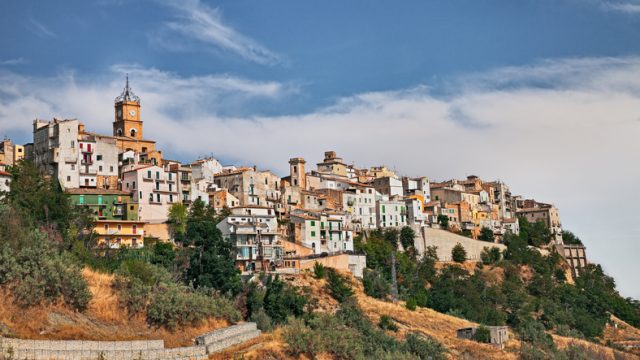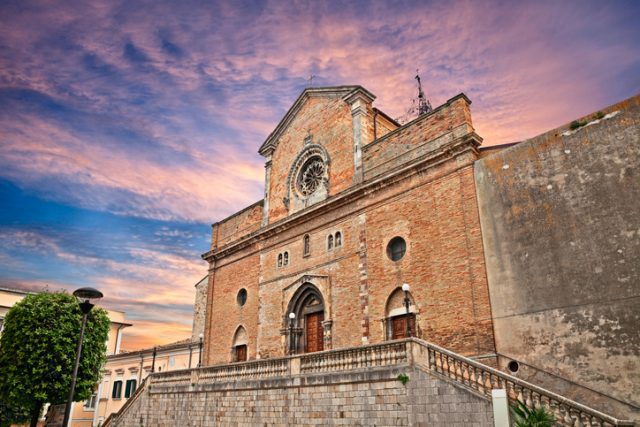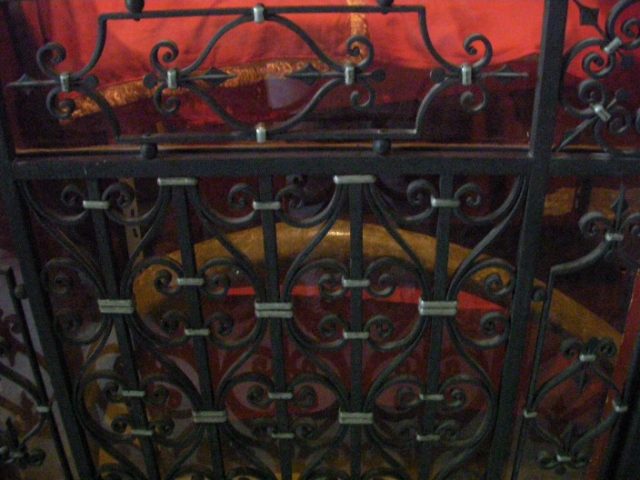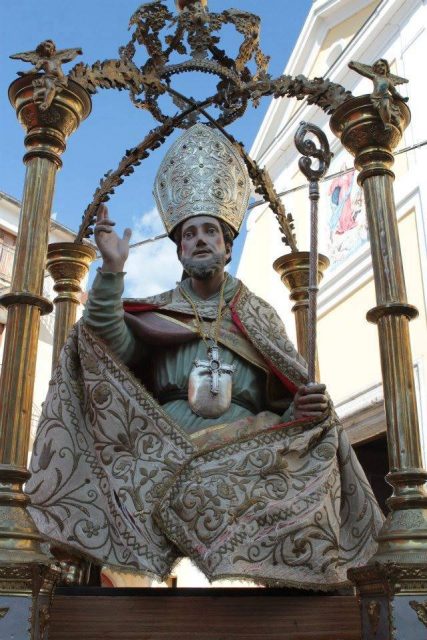Among the religious artifacts found in the Italian city of Atessa is a long and rather large bone – a dragon’s rib reportedly. Kept in a church, it is rumored to be the rib of a dragon that once terrorized the area.
While the idea is fanciful, there is an exciting tale of bravery and blood-letting behind it, one that would make Game of Thrones author George R. R. Martin himself sit up and take notice.
Back in the mists of time, there were two villages called Ate and Tixa. Each stood on a hill and between them was a valley, otherwise known as the dragon’s lair.

Much like the character of Smaug in The Hobbit, this arrogant flame spewer dominated the land. If the villagers were going to rid themselves of its presence, they would need help.
Enter Leucio, otherwise known as the Bishop of Brindisi. He captured and slayed the beast single-handed, doing it by the sheer power of his faith.

However, following this daring feat, Leucio didn’t just dig an enormous hole and throw the monster in. Dragons are useful things, even after death. Their black blood contains magical properties, and so the dark liquid was poured into the valley, whereupon sodden marsh transformed into rich soil.

Ate and Tixa joined forces to become Atessa and Leucio went on his way. But not before he gave the villagers the dragon’s rib to put on display as a compelling tourist attraction. The church was constructed where the dragon used to hold sway and the rest is history, though history of the most questionable kind.
While it’s easy to make light of the legend, the story is important to the cultural fabric of Atessa. An alternative explanation is that the bone belonged to a mammoth. This is a possibility, yet only slightly more plausible than the arrival of a dragon in the first place.
Strange Ancient Places Around The World.
There is a long narrative running through the centuries of bones being used as part of traditions and rituals. A pair of ribs forms part of the collection at The Museum of Witchcraft and Magic in Boscastle, Cornwall.
Its website quotes Cecil Williamson, a Warlock, who details “Two rib bones used to smooth sand cast on the floor for divination, by reading the fall of cast sheep’s knuckle bones and their sand marks.”

When the British Library unveiled its “Harry Potter: A History of Magic” exhibition in 2017, it showcased a combination of Potter-related items and ancient artifacts from the hallowed institution’s shelves.
A report in The Guardian even name-checked something big, scaly. and familiar: “The exhibition includes the oldest objects in the British Library: scorched, cracked bones used for fortune-telling in China more than 3,000 years ago, when they were widely believed to come from dragons.”

Returning to the legend of Atessa, the article mentions that “A book from the collection records a more recent sighting: a ‘monstrous dragon’ that crash-landed in a field in Bologna, Italy, on 13 May 1572, and was on display in a local museum for a century after.” It seems the Italians have had more than their fair share of encounters with fire breathers.
Related Article: Dragon Lore: Origins of the Fire-Breathing Beast
Whether you see folklore as inspired or irritating, its power to shape a nation’s consciousness is undisputed. Perhaps when our history books are long forgotten, these stories will still be circulating from mouth to mouth across the globe. And the dragon’s rib might still be there.
Steve Palace is a writer, journalist and comedian from the UK. Sites he contributes to include The Vintage News, Art Knews Magazine and The Hollywood News. His short fiction has been published as part of the Iris Wildthyme range from Obverse Books
